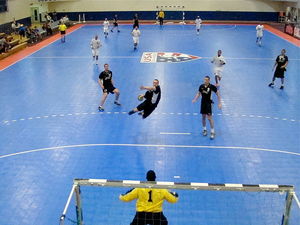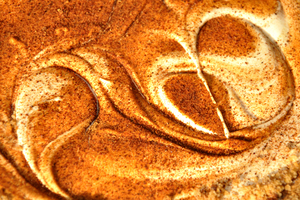The sport known as team handball is known simply as handball in most of the rest of the world. What Americans recognize as handball is a significantly different from the Olympic sport of the same name. The history of Olympic handball traces back to a commingling of games from Germany called raffball and torball and a Danish game called hanbold. As with soccer, team handball is exceptionally popular in much of the rest of the world, but still a rather dormant sport in the U.S. The game that evolved from handbold maintains the level of popularity in Denmark commonly enjoyed by soccer and winter sports.
Fast and Furious
Team handball’s lack of a foothold in America is actually rather surprising. The game moves at much more rapid pace than soccer so that takes care of the speed problem. And since upper body movement preferred by American is an essential part of the game, that takes care of our lack of interest in the below the waist action of soccer.
Heil Handball!
An unfortunate tie between team handball’s Teutonic origins and the Olympics may well have affected the ability of the game to make inroads into the American counsciousness: the introduction of Olympic handball occurred in 1936 at the Berlin Olympics presided over by Hitler. That Germanic connection resulted in the banishment of handball from the Olympics following World War II. Interestingly, the Games would be free of fast paced handball until 1972 when it was reintroduced at the Olympics held in Munich. That’s in Germany, folks.
The Court
Team handball is played on a court that is 131 feet long and 65.5 feet wide. At either end are situated two goals similar to those found in soccer. The goalie, also known as the Keeper, is one of seven players that includes Left and Right Backs, Wingers, Centre, Outlying Centers and Circle Runners
High Scoring
Another reason why it seems a big mysterious that team handball has not caught on in America is that the game tends to produce high scores. A case could be made that if a lower point system were instituted in American football that it would not quite as popular. Americans complain about the lower scores in soccer, but if two points were awarded for a touchdown and one point for a field goal, it would not be uncommon to see soccer level scores in its American counterpart. For this reason, the high scores in team handball seem likely to appeal to football fans.
Contact Sport
Another element of Olympic style team handball that should appeal to Americans more than it seems to is that it can be a very rough contact sport. Players are constantly bumping up against each and engaging in deliberately provocative actions as well as accidental. If you resist basketball because it seems like the action is being interrupted by a foul every other minute, you should give team handball a chance. Referees in handball differ from officials in basketball in their willingness to overlook even some egregiously intentional rough play in order to not to bring the action to a standstill as long as the team affected by the foul is not put at an obviously unfair disadvantage. If you like your sport physical, then team handball is the game for you.
Penalties
Not that referees don’t have occasion to do their job. When a player is called for a foul like intentional tripping, a penalty shot may be awarded. The shot is taken from a line placed 7m from the goal and, as with soccer, it down to mano a mano between the victim of the foul and the Keeper.
Gameplay
Team handball may seem like a completely different world to those who have played American-style handball. Any similarity to racquetball is not just coincidental, but psychotic. Team handball players can drubbed the ball while advancing down the court. High speeding passing can be done backwards, overhanded and with a fist punching motion. Think of team handball more like a game of fast-break basketball with a soccer goal at the end of the court rather than as a game of bouncing a small ball off all six surfaces in an enclosed rectangle.





